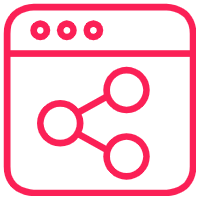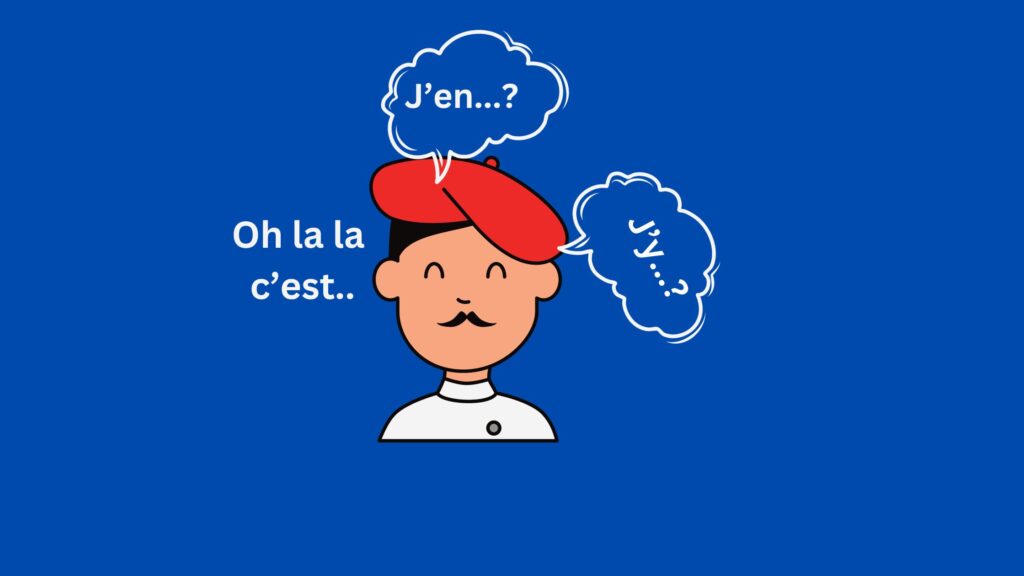Understanding French DELF B2 Direct to Indirect Speech: Easy Guide
In French, direct speech (discours direct) is when you report exactly what someone says, usually with quotation marks. Indirect speech (discours indirect) involves changing the original sentence to fit within another sentence. Let’s explore the rules for converting direct speech to indirect speech with easy examples.
1. Tense Changes (Les changements de temps)
When converting direct speech to indirect speech, tenses often change, especially if the introductory verb (like dire, demander, répondre) is in the past tense. Here’s a table summarizing the changes:
| Direct Speech | Indirect Speech (past) |
| Présent | Imparfait |
| Passé composé | Plus-que-parfait |
| Futur simple | Conditionnel présent |
| Futur antérieur | Conditionnel passé |
| Impératif | Infinitif |
Examples:
- Direct: Elle dit : « Je vais au bureau. »
Indirect: Elle dit qu’elle va aller au bureau.
(No tense change when the introductory verb is in the present.) - Direct: Elle a dit : « Je vais au bureau. »
Indirect: Elle a dit qu’elle allait au bureau.
(Present becomes imperfect when the introductory verb is in the past.) - Direct: Il a dit : « Je suis allé à Paris. »
Indirect: Il a dit qu’il était allé à Paris.
(Passé composé becomes plus-que-parfait.)
2. Time Indicators (Les marqueurs de temps)
Words that indicate time change in indirect speech, particularly when the introductory verb is in the past. Here’s a list of common time markers and their changes:
| Direct Speech | Indirect Speech |
| aujourd’hui | ce jour-là |
| demain | le lendemain |
| hier | la veille |
| la semaine prochaine | la semaine suivante |
| la semaine dernière | la semaine précédente |
Examples:
- Direct: Il a dit : « Je partirai demain. »
Indirect: Il a dit qu’il partirait le lendemain. - Direct: Elle a dit : « Je l’ai vu hier. »
Indirect: Elle a dit qu’elle l’avait vu la veille.
3. Pronouns (Les pronoms)
Pronouns often change in indirect speech to reflect the new speaker’s perspective. First-person pronouns (je, me, mon) typically change to third-person (il/elle, lui/elle, son/sa).
Examples:
- Direct: Il a dit : « Je suis fatigué. »
Indirect: Il a dit qu’il était fatigué. - Direct: Elle a dit : « Mon frère arrive. »
Indirect: Elle a dit que son frère arrivait.
4. Question Forms (Les questions)
In indirect speech, there are two types of questions: yes/no questions and wh- questions.
Yes/No Questions:
Use “si” to introduce yes/no questions.
- Direct: Elle a demandé : « Est-ce que tu viens ? »
Indirect: Elle a demandé si je venais.
Wh- Questions:
For questions that begin with a question word (like pourquoi, quand, comment), the question word remains, but the sentence structure changes.
- Direct: Il a demandé : « Pourquoi tu pleures ? »
Indirect: Il a demandé pourquoi je pleurais.
5. Imperative to Infinitive (L’impératif à l’infinitif)
Commands in direct speech change to the infinitive form in indirect speech. The imperative verb is replaced by “de” + infinitive.
Examples:
- Direct: Elle a dit : « Viens ici ! »
Indirect: Elle a dit de venir ici. - Direct: Il a dit : « Faites attention ! »
Indirect: Il a dit de faire attention.
6. Special Cases with “Que”
When converting a sentence into indirect speech, you often need to add “que” to introduce a subordinate clause. This is especially important when transforming declarative sentences (statements).
Examples:
- Direct: Il a dit : « Je suis prêt. »
Indirect: Il a dit **qu’**il était prêt. - Direct: Elle a dit : « Nous allons au cinéma. »
Indirect: Elle a dit que nous allions au cinéma.
7. Using the Conditional (Le conditionnel)
When direct speech contains a future tense, and the introductory verb is in the past, the future tense in direct speech often becomes the conditional tense in indirect speech.
Examples:
- Direct: Il a dit : « Nous partirons bientôt. »
Indirect: Il a dit que nous partirions bientôt. - Direct: Elle a dit : « Tu auras fini demain. »
Indirect: Elle a dit que j’aurais fini le lendemain.
Let’s dive deeper into “si” for yes/no questions and “a dit” for indirect speech to clarify how they work.
8. Using “si” for Yes/No Questions in Indirect Speech
In direct speech, when someone asks a yes/no question (questions that can be answered with “yes” or “no”), the structure of the sentence changes in indirect speech. To report a yes/no question indirectly, we replace the question structure with a statement and use the word “si” (meaning if in English).
Explanation:
When transforming a yes/no question into indirect speech:
- We remove question words like “Est-ce que”, “Qu’est-ce que”.
- We add “si” (which translates to if in English) to introduce the subordinate clause.
- The verb tense changes (if necessary, based on the introductory verb’s tense).
- The subject and verb order return to normal (subject + verb instead of verb + subject as in direct speech).
Examples:
- Direct Speech: Elle a demandé : « Est-ce que tu viens demain ? »
(She asked: “Are you coming tomorrow?”) - Indirect Speech: Elle a demandé si je venais le lendemain.
(She asked if I was coming the next day.)
Here, in the direct speech, the phrase “Est-ce que tu viens demain?” is a yes/no question. In indirect speech, we add “si” to introduce the clause, and “viens” (present tense) changes to “venais” (imparfait) because the introductory verb “a demandé” is in the past tense. We also replace “demain” with “le lendemain.”
Another example:
- Direct Speech: Il a demandé : « Est-ce que vous avez fini ? »
(He asked: “Have you finished?”) - Indirect Speech: Il a demandé si nous avions fini.
(He asked if we had finished.)
Here, “avez fini” (passé composé) changes to “avions fini” (plus-que-parfait) because the question is being reported in the past. The “si” introduces the yes/no question in the indirect speech.
9. Using “a dit” or Other Verbs for Indirect Speech
In indirect speech, the introductory verb is crucial. It sets up the indirect reporting of what someone said. Common verbs for introducing indirect speech include:
- dire (to say)
- demander (to ask)
- répondre (to answer)
- annoncer (to announce)
- affirmer (to affirm)
The tense of the introductory verb, such as “a dit” (said), determines whether we need to change the tenses in the reported speech.
Explanation:
- If the introductory verb is in the present tense (like dit), the tense in the indirect speech doesn’t change.
- If the introductory verb is in the past tense (like a dit, avait dit), the tense in the indirect speech changes based on the original tense of the direct speech.
Examples:
- Direct Speech: Il dit : « Je suis fatigué. »
- Indirect Speech: Il dit qu’il est fatigué.
Since the introductory verb dit is in the present, the verb suis remains in the present tense in indirect speech.
Now, with an introductory verb in the past tense:
- Direct Speech: Il a dit : « Je suis fatigué. »
- Indirect Speech: Il a dit qu’il était fatigué.
Because a dit (past tense) is used, the verb suis (present tense) changes to était (imparfait) in indirect speech.
Another example with “demander”:
- Direct Speech: Elle a demandé : « Pourquoi es-tu en retard ? »
- Indirect Speech: Elle a demandé pourquoi j’étais en retard.
Here, “es-tu” (present tense) becomes “étais” (imparfait) because the question is reported in the past. The question structure changes into a statement.
Summary:
- “Si” for Yes/No Questions:
- Use “si” to introduce yes/no questions in indirect speech.
- Example: Direct: “Est-ce que tu viens?” → Indirect: “Elle a demandé si je venais.”
- Introductory Verbs:
- The introductory verb (a dit, a demandé, etc.) decides whether you need to change the tense in indirect speech.
- If it’s in the present tense, no tense changes are needed.
- If it’s in the past tense, the verb tense in the reported clause often changes according to the rules of tense shifting (present → imparfait, passé composé → plus-que-parfait, futur → conditionnel, etc.).
Recap Table of Key Changes:
| Direct Speech | Indirect Speech |
| Présent: “Je vais” | Imparfait: “Il disait qu’il allait” |
| Passé composé: “J’ai vu” | Plus-que-parfait: “Il disait qu’il avait vu” |
| Futur simple: “Je partirai” | Conditionnel: “Il disait qu’il partirait” |
| Aujourd’hui | Ce jour-là |
| Demain | Le lendemain |
| Hier | La veille |
| Impératif: “Viens!” | Infinitif: “de venir” |
Conclusion:
Converting direct to indirect speech in French involves changes to verb tenses, pronouns, and time indicators. These changes ensure that the reported speech fits smoothly into the sentence.
Now let’s test what we have learnt so far!













